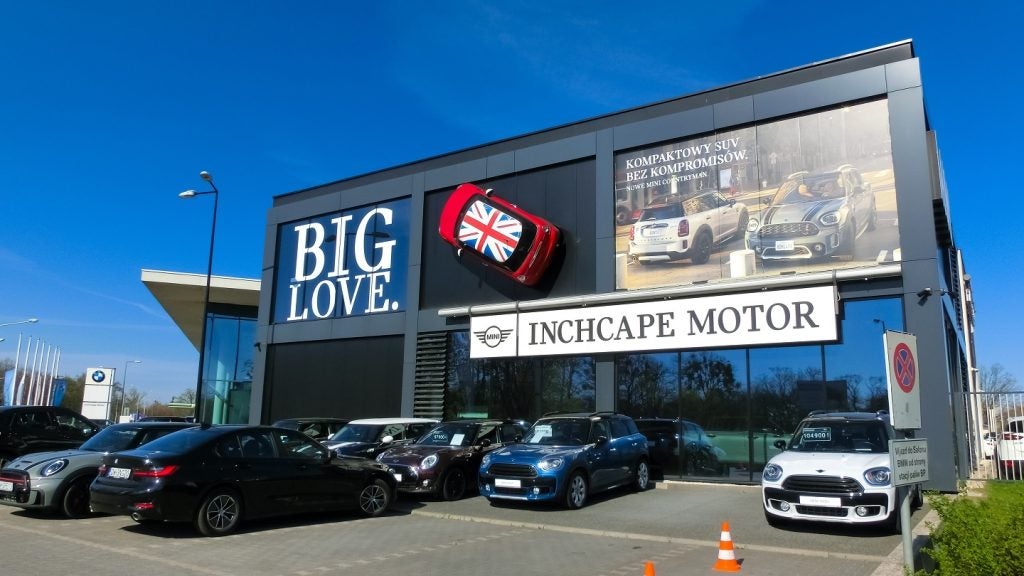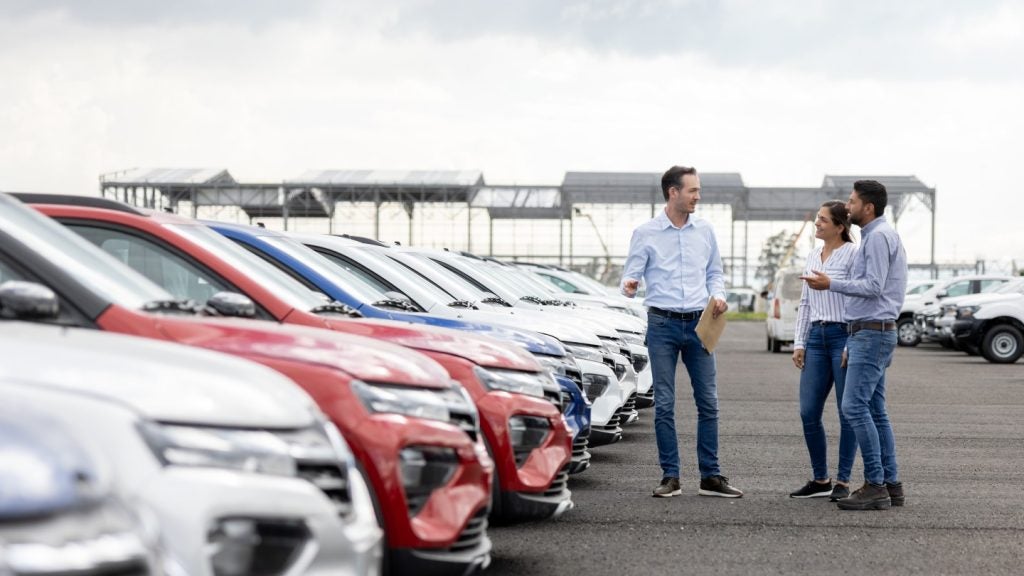
Online car sales are growing. In the used car space particularly, with fewer time constraints than new cars, the market is taking off – with potentially serious consequences for traditional dealerships. Saad Ahmed spoke to Carspring, Carvana and Hellocar about the online model, and what could be next
“We believe consumers are buying more and more high-value purchases online, it’s becoming the default, expected behaviour for a large cohort of people,” Ben Smith, head of product at Hellocar tells Motor Finance.
“The car industry needs to catch up, and will catch up with the expectations consumers have that are being set by other shopping experiences.”
Twenty years ago, when the internet was still in its infancy, people were just tentatively beginning to shop for food online. Over the years, as confidence with technology increased and more businesses started selling online, consumers’ misgivings about online shopping started to melt away.
Today, many large purchases, such as computers and even household appliances, are made at the click of a button. Motor Finance spoke to a selection of online used car sales websites to see if the channel could disrupt the traditional dealer model, and how the complexities of motor finance could be reconciled.
The importance of being online
How well do you really know your competitors?
Access the most comprehensive Company Profiles on the market, powered by GlobalData. Save hours of research. Gain competitive edge.

Thank you!
Your download email will arrive shortly
Not ready to buy yet? Download a free sample
We are confident about the unique quality of our Company Profiles. However, we want you to make the most beneficial decision for your business, so we offer a free sample that you can download by submitting the below form
By GlobalDataAs purely online companies, online car sellers must have a well-developed digital storefront. The advantage the companies who speak to Motor Finance claim to have over traditional dealerships branching out into online is that they are digital natives, created to navigate the virtual marketplace.
“Carvana heavily invests in advanced, proprietary technology to deliver a seamless car-buying experience, enabling customers to buy and finance a vehicle online, and in as little as 10 minutes,” Ryan Keeton, co-founder and chief brand officer at Carvana, explains.
Keeton says consumers benefit from this flexibility, describing it as “one of the most important factors” in customer service, and as a key way of enhancing convenience.
“At Carvana, we’re giving consumers access to everything they need to make a smart vehicle purchase, on their terms, at their convenience – and they are in control the entire time,” he continues.
The issue of giving more control to the customer is something the respondents name as a guiding principle of online car sales.
Carspring chief executive officer Maximillian Vollenbroich declares that “online is yesterday”, and says it is the automotive industry’s duty to drive further towards mobile to enhance the consumer experience, speed up the process, and devolve power to the purchasers.
“Online, someone else still dictates the terms; you have to go in there and you’re in one session. On mobile, you schedule how you want to interact,” Vollenbroch says.
He contrasts with what he calls “old world” communications of email and telephone, giving the example of being on hold for 10 minutes only to be told there is no longer enough time, and to call back. A similar issue still arises with email, as dealers can respond when they want; emails are not therefore, necessarily a form of instant communication in practice.
Vollenbroich sees mobile and app-based interactions as key to shifting the balance of power towards the customer. In doing so, he says, these are creating a more relaxed and controlled purchase from the buyer side.
“Maybe I have five minutes now, so I start filling in some forms. If there is the opportunity to do this through a mobile app, for example, no session would expire, and I’d get immediate feedback,” Vollenbroich continues. “That is something where the industry is still behind. We’re trying to do our part to catch up there.”
Vollenbroich adds that Carspring uses a live chat feature, though for mobile use this comes with its share of problems. “It looks really nice on the desktop, but it you have it on the mobile, you have this window popping up into your screen,” he says.
“We don’t push; it’s not like we’re in the store, we’re standing back. When you reach out, we are there to take up everything,” Vollenbroich says of Carpsring’s live chat.
He adds that Carspring is trying to make its website and process comprehensive enough so users can go through the process autonomously with ease. “But then when you have questions and you want to go into more conversations, then the chat is a good way or you can call in. You have the choice,” he explains.
On finance
Unlike a typical online purchase on Amazon, for example, many cars are purchased on finance. While this adds an extra layer of complexity to the online used car sales process, sellers have established relationships with lenders in order to carry out these services, and seek simple processes.
Vollenbroich tells Motor Finance that the finance journey on Carspring is flexible, and aims for it to be easy enough to follow autonomously. “It’s very much like booking a flight. We display the rates and terms immediately, and you can then toggle around, and say whether or not you want to continue,” he says.
“If you then want to continue we’ll reach out, and try to push you through as fast as possible and help you.”
According to Carspring, the live chat feature is central to the process. Vollenbroich says the majority of its lenders are able to provide fast information through this feature. “This flow is live for 80% of our lenders; we’re working on making it live for all of our customers. A couple of lenders don’t have the technology to feed back the information to us in real time,” he says. “We’ll have to send an email notification with [their customers’] rates, and then someone from the lending team [can] call [them] up to try to reach out.”
As in the physical space, the majority of cars are sold on PCP. Ben Smith at Hellocar says more than half of its consumers buy on finance, and PCP, in addition to hire purchase, is part of the proposition.
Vollenbroich says that in addition to PCP and hire purchase, Carspring is working with lenders to develop a lease purchase product.
“We’re discussing at the moment, with some lenders, to actually devise effectively a lease purchase product, where we would underwrite the residual value,” Vollenbroich says. “At the end of the term they decide if they want to continue monthly, actually buy the car, or walk away, and we just take the car back, and recycle.”
According to Vollenbroich, the development of a leasing product would be in line with the continuing rise of usership as a behavioural pattern and desire. “We’re trying to work together with the finance providers to treat the consumer as a user rather than an owner, as from our experience, our consumers want to use, they don’t want to own, so we see ourselves effectively as a provider of mobility,” he says.
Keeton says Carvana allows users to self-adjust their car purchase, showing monthly payments and purchase terms. He explains that buyers can “in real time adjust the ‘finance dials’ to see every combination of available down payment, monthly payment and terms that are specific to you and will appear on your contract.
“Customers can use our financing search filter to find cars that fit comfortably in their budget,” he says
A matter of trust
In 2012, a survey by Time magazine reported that 98% of Americans “don’t trust” the internet. Though it was taken five years ago and in a different market, net scepticism persists to the present day.
The challenge for online used car dealers to persuade individuals to purchase a car they have never physically seen is compounded by some people’s lack of trust online. Keeton explains that extensive imagery and technology to present cars on Carvana, including features such as “virtual spins”, are central to this.
“We have an online inventory which includes extensive imagery of each vehicle captured by 360-degree photo technology, enabling you to take a virtual spin and inspect all of the features and imperfections of every car,” he says.
The prospect of being able to return the car if unsatisfied is presented as a persuading factor to the consumer, in a sort of ex-ante sales-persuasion technique. Keeton says Carvana will accept a return within seven days if a consumer is unhappy with their purchase.
“It takes more than a typical 10-minute test drive to make a $20,000 decision, so customers can take their time to see if the car fits with their life,” he says.
“Once the week is up, if they don’t love it, we’ll take it back and they can swap for another vehicle, or they can choose to unwind the transaction.”
The issue of fraud may potentially arise in such a situation. An individual may only require a vehicle for a short period, and simply buy it and return it for a refund within the clearing period. However, Smith from Hellocar says a mileage limit could detect such improper practices. “Two-hundred-and-fifty miles is our mileage caveat,” he says, but adds that he considers that some aspects of the finance process would make such fraud unlikely.
“We still think that will be quite a rare occurrence, because of the investment that someone has to go through,” he adds.
“They’ve either got to have cash available in the bank or a credit card, or they’ve gone through the process to apply for finance and get credit checked,” he says.
End of the road for dealerships?
“Being online allows us to operate at a significantly lower cost point than a traditional car dealership, so we’re able to pass those savings onto the consumer,” Smith says. “From a consumer perspective it’s a much more convenient, simple purchase experience.”
Traditional used car dealerships are under assault on two fronts from what they may consider online upstarts. Online car sellers have lower operating costs as they do not have to keep premises, which may leave traditional dealers struggling to compete on price. With a swifter, user-driven online purchasing experience, traditional dealerships must also compete on speed.
It would be easy to say that a shift to purely online car sales is approaching fast. However, there may be closer collaboration between the two markets than is immediately obvious.
Vollenbroich tells Motor Finance that dealers are permitted to list on Carspring as an addition to their physical locations. “We can work together with the dealerships and offer a separate channel,” he says. “You can still have your dealership, but you can at the same time advertise your cars on an online platform.”
He adds that in addition to logistics and maintenance partners, Carspring works closely with dealer partners as part of its stocking strategy.
“Our stock comes from effectively three sources: We have dealer partners, we list and advertise their stock,” he says. “The agreement is that they prepare the car to our standards. We then actually buy it off them, deliver it to the customer, and then take over the liability there.”
According to Vollenbroich, Carspring was also not established as a usurper to existing dealer-related service providers, such as logistics and maintenance companies.
“One thing that differentiates Carspring from a lot of the other models is that we’re trying to be the spider in the web, to be this interface,” he says. “We will probably shift the landscape. You might buy your car in Manchester and have the service done in London or elsewhere, but we’ll keep you in the same network,” he says.
“Our aim is also to help the existing industry to transition into a more progressive customer interaction,” he says.
Online car dealers seem to indicate a willingness and desire to mirror the cultural shift in online purchases with a modern, interactive customer service offering, something which physical dealerships have yet to catch up to.
For now at least, the world of physical dealerships retains a heartbeat, and the plug cannot be pulled just yet. But with online car dealerships offering a faster and more interactive process, existing dealerships cannot afford to rest on their laurels, and must be prepared to adapt to survive.







